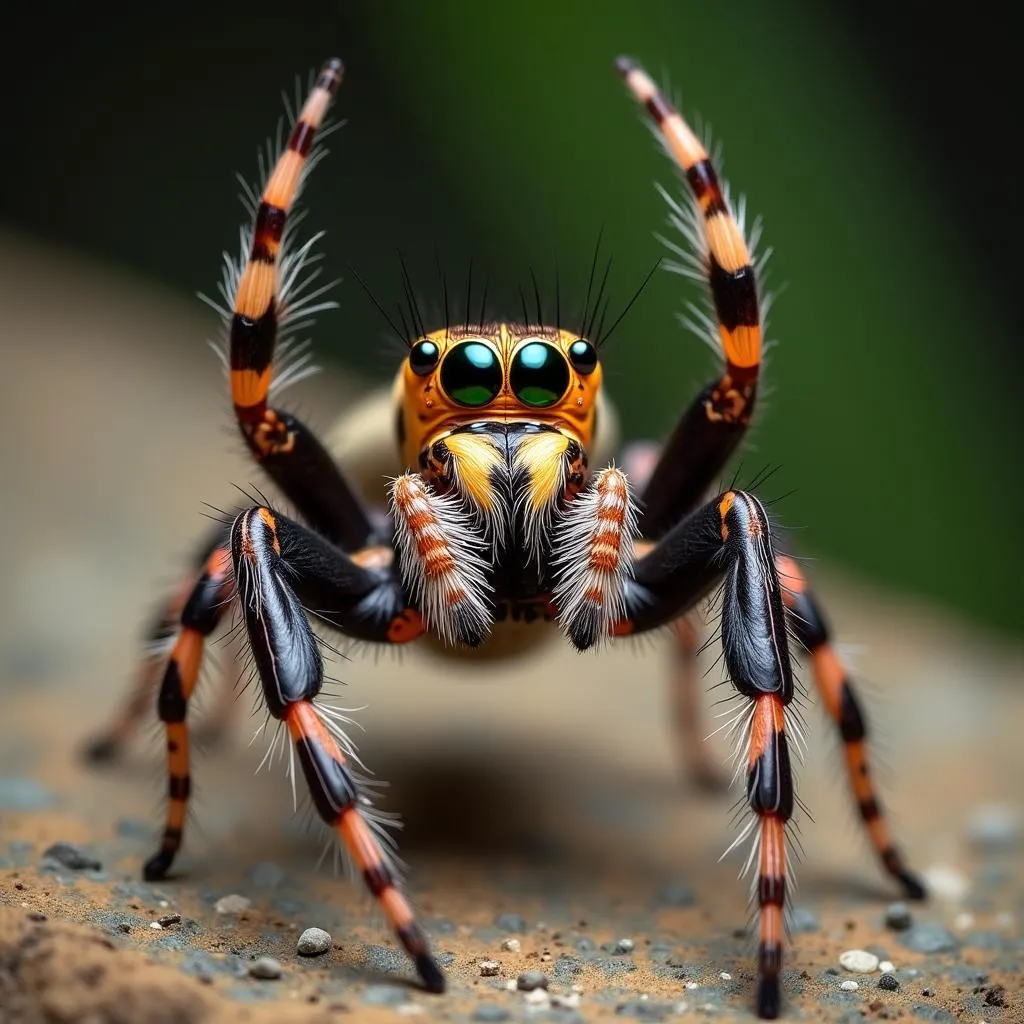Spiders are fascinating creatures known for their intricate webs and, sometimes, their vibrant colors. But can these eight-legged wonders actually change the colors they display? The answer, like many things in nature, is nuanced. While not all spiders possess the ability to transform their hues, certain species have evolved remarkable adaptations that allow them to adjust their appearance in surprising ways.
Color Changing Mechanisms in Spiders
Let’s delve into the science behind how some spiders can seemingly change colors.
- Pigment Movement: Certain spider species possess special cells called chromatophores within their skin. These cells contain pigments that can be manipulated to alter the spider’s overall color. By contracting or expanding these cells, spiders can control the distribution of pigments, leading to visible color shifts. This mechanism is similar to how chameleons change color.
- Structural Colors: Some spiders achieve vibrant colors not through pigments, but through microscopic structures in their exoskeletons that interact with light. These structures scatter light waves, creating the illusion of specific colors. While these spiders can’t directly change the structure of their exoskeletons, factors like moisture levels or viewing angle can subtly alter how light interacts with these structures, leading to slight color variations.
- Molting: Don’t forget that spiders periodically shed their exoskeletons in a process called molting. While not a rapid color change, the new exoskeleton can reveal brighter colors or even different patterns, making it seem like the spider has transformed its appearance.
 Spider Camouflage
Spider Camouflage
Why Change Color?
The ability to change color, whether subtle or dramatic, offers several advantages for spiders in their constant struggle for survival.
- Camouflage: Many spiders have evolved to blend seamlessly into their surroundings, making them nearly invisible to both unsuspecting prey and potential predators.
- Attracting Mates: In some species, males sport vibrant colors or patterns to attract females during courtship displays.
- Warning Signals: Some spiders display bright colors as a warning to predators, advertising their potential toxicity or venom.
 Crab Spider Changing Color
Crab Spider Changing Color
Examples of Color-Changing Spiders
Several spider species are known for their color-changing abilities, each with unique adaptations and reasons for shifting hues:
- Crab Spiders (Thomisidae): These fascinating spiders are masters of camouflage and can change their color to match the flowers they inhabit. This allows them to ambush pollinating insects with remarkable effectiveness.
- White-banded Crab Spider (Misumenoides formosipes): This North American species can change from white to yellow and back again, depending on the flower it’s hunting on. This change can occur over several days.
- Jumping Spiders (Salticidae): Some jumping spiders, known for their exceptional vision, exhibit color changes during courtship rituals. Males often display bright colors and intricate patterns to impress potential mates.
 Jumping Spider Courtship
Jumping Spider Courtship
Conclusion
While not all spiders possess the ability to change colors, certain species have evolved incredible adaptations to alter their appearance. Whether for camouflage, attracting mates, or warning off predators, the capacity for color change showcases the remarkable diversity and ingenuity found in the spider world. The next time you encounter a spider, take a moment to appreciate the wonders of its coloration and the fascinating mechanisms that might be at play.
FAQs
Do all spiders change color? No, only certain species of spiders have evolved the ability to change color.
How long does it take for a spider to change color? The speed of color change varies depending on the spider species and the mechanism involved. Some, like crab spiders, can take several days, while others, like certain jumping spiders, exhibit more rapid changes.
Are color-changing spiders dangerous? Not necessarily. While some brightly colored spiders might be venomous, color-changing ability itself doesn’t indicate danger. It’s always best to admire spiders from a safe distance and avoid handling them.
Can spiders choose what color to change to? The color changes are often triggered by environmental factors like the color of their surroundings or the presence of a potential mate. Spiders don’t consciously “choose” their colors.
What is the most impressive color-changing spider? The White-banded Crab Spider is a top contender, with its ability to shift between white and yellow to perfectly match its hunting ground.
Need Help Choosing the Perfect Colors for Your Space?
Contact Color Box Hanoi at 0373298888 or [email protected]. Our team of color experts is ready to help you create a vibrant and inspiring home that reflects your unique style. Visit us at 86 Cầu Giấy, Hà Nội, for a personalized consultation.
